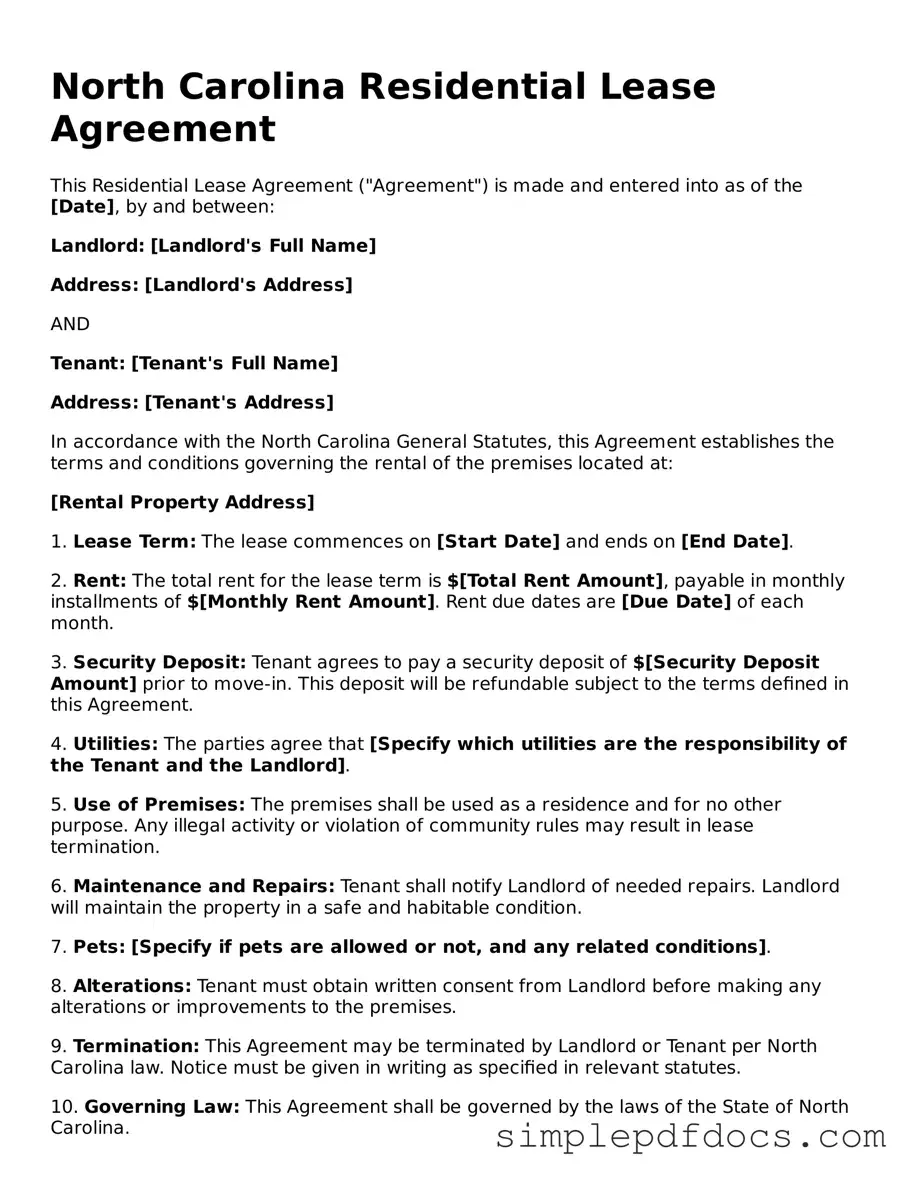Legal Residential Lease Agreement Document for the State of North Carolina
The North Carolina Residential Lease Agreement is a legal document that outlines the terms and conditions between a landlord and tenant for renting residential property. This form serves to protect the rights of both parties while ensuring a clear understanding of their obligations. Familiarity with this agreement is essential for anyone involved in a rental situation in North Carolina.
Get Document Here
